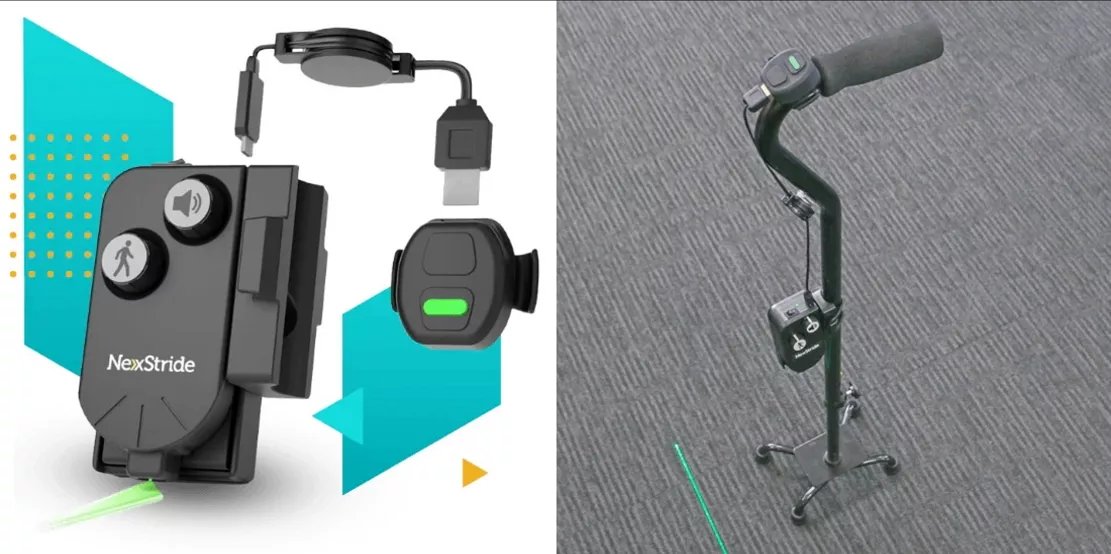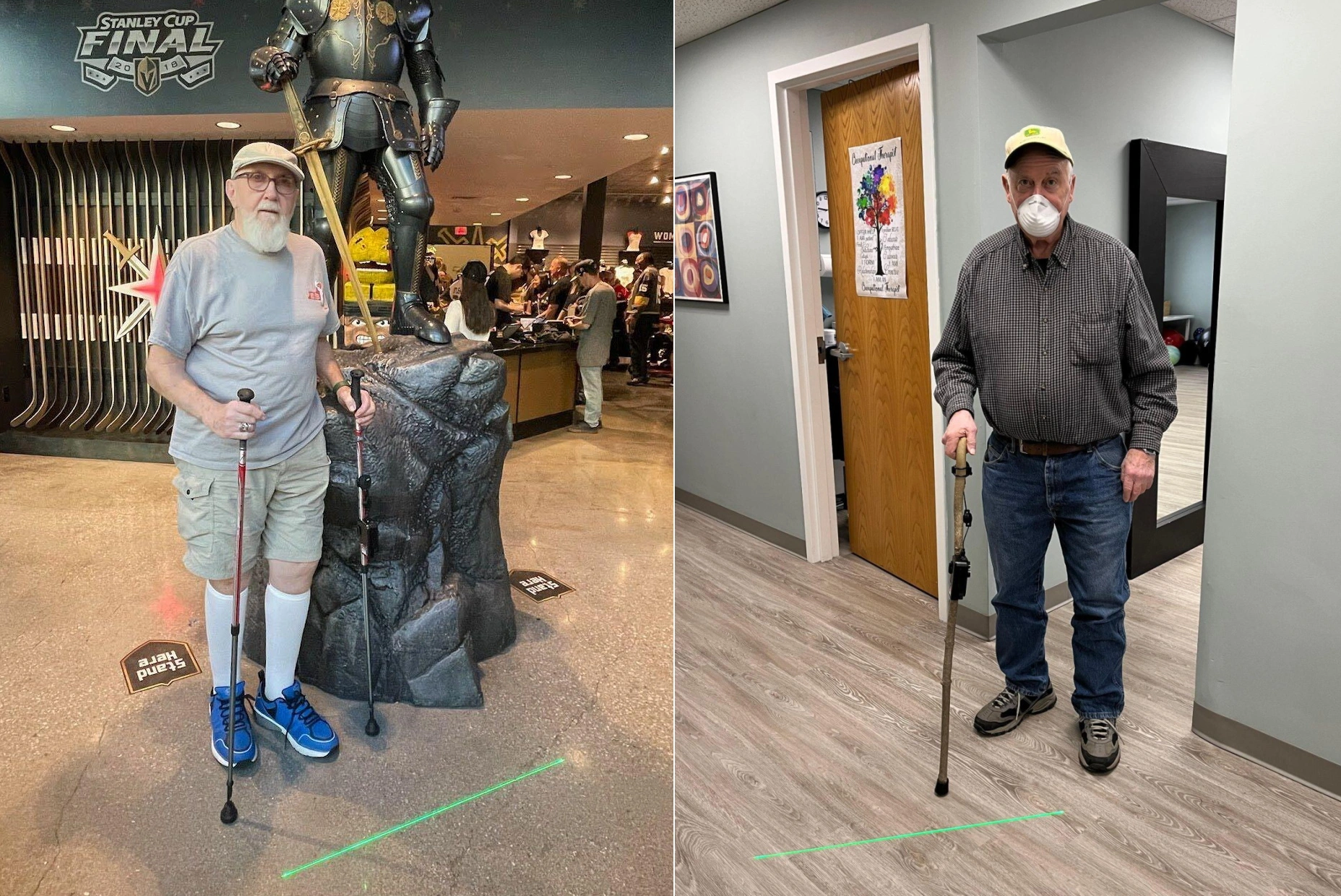One of the challenges faced by patients with Parkinson's disease is that they may "freeze" during normal movement, leading to falls and lack of mobility. Surprisingly, small external cues can help them get rid of the freeze or avoid it altogether - de Oro has raised $2.8 million to commercialize its nexstride portable gadget. It is reported that these gadgets can provide these tips on demand.

The simplest way to understand freezing is that when your body converts the impulse of "moving forward" into actual exercise, the normal pathways in the brain cannot be activated correctly. This can cause movement to slow down or stop - despite people's willingness to let their limbs move in a normal way.
The study found a surprisingly effective technique to prevent this situation, that is, prompt. When a person sees or hears an external prompt related to forward movement, it will activate a different forward walking path, and then make the person out of the frozen state.
De Oro's device provides two such tips: one is a little tinkling sound similar to a metronome, which makes the brain think of moving synchronously with it; The second is that there is a laser projection line in front of the user's foot, which seems to activate the idea of crossing or crossing something, rather than just "moving forward".
Nexstride connects a small elastic ring like a bicycle headlamp to a walker or walking stick. It has a wired controller, which can be placed in a convenient place for users. The hardware dial on the host allows them to control the volume and rhythm of the metronome and the position of the laser line.
There are many studies on the efficacy of this method in the laboratory. After investigating its customers, the company found that most people can walk around more confidently and reduce fear. The clinicians working with them recommend the device to their clients as a convenient and versatile way to improve mobility.

Now there are some such projects, such as u-step laser and walkers equipped with sound equipment. However, the u-step is built into the walker itself: a large and heavy object, which is not particularly suitable for use outside the home. Of course, it is not something that a person with action problems can throw into the trunk. Just like the case of barrier free hardware, it still has many problems left over from decades ago.
The advantage of nexstride is that it is independent and portable -- people usually have a favorite walking stick or walker, and this gadget can be connected to almost anything and switched in a few minutes. Sidney Collin, founder and CEO of de Oro, said: "nexstride does not allow people to compromise between choosing their favorite mobile aids and getting these effective visual and auditory cues."
Manual operation is a design choice driven by feedback. Users and clinicians recommend this approach instead of the automatic approach that nexstride initially tried, which might turn on the laser or sound when people stopped moving.
The only problem with this product is that it retails for $500 and is not covered by insurance. Although it is not the most expensive medical or mobile device, its price is a little difficult to reconcile with the device itself. Although it is well designed, it does not look particularly strange or expensive.
The company said that its pricing of nexstride is to be competitive with other options, and its performance is completely superior to other options. At the same time, it will also keep production in the United States - which will inevitably increase costs to a certain extent.
Although full retail may sound expensive, any veterans can get nexstride free of charge from the Veterans' Association, which is definitely a vote of confidence for an organization that serves a large number of people in need. The parkinson's health fund can pay half to all of the expenses through appropriation.
With the health and mobility of an aging population, devices like this may get rid of the likes of medical providers and become gadgets for more ordinary consumers.
The $2.8 million seed round financing will be used to expand the operation scale of de Oro and provide the equipment to more people. It is reported that this round of financing is led by true health ventures and participated by AARP, startup health, capital factory, Wai MOHALA ventures, kachuwa Impact Fund, Barton investments, Healthtech capital, health VC club, rocks VC and mentors fund. Before that, the company had raised $1.5 million.